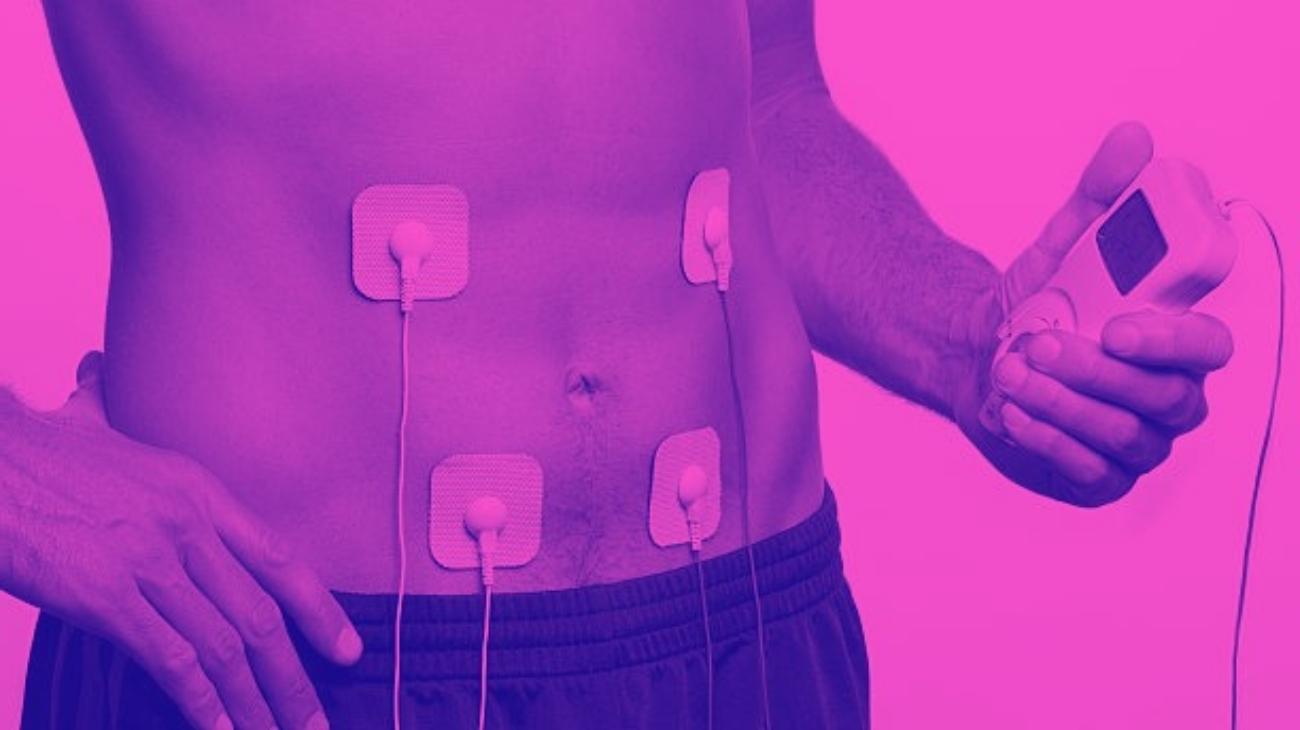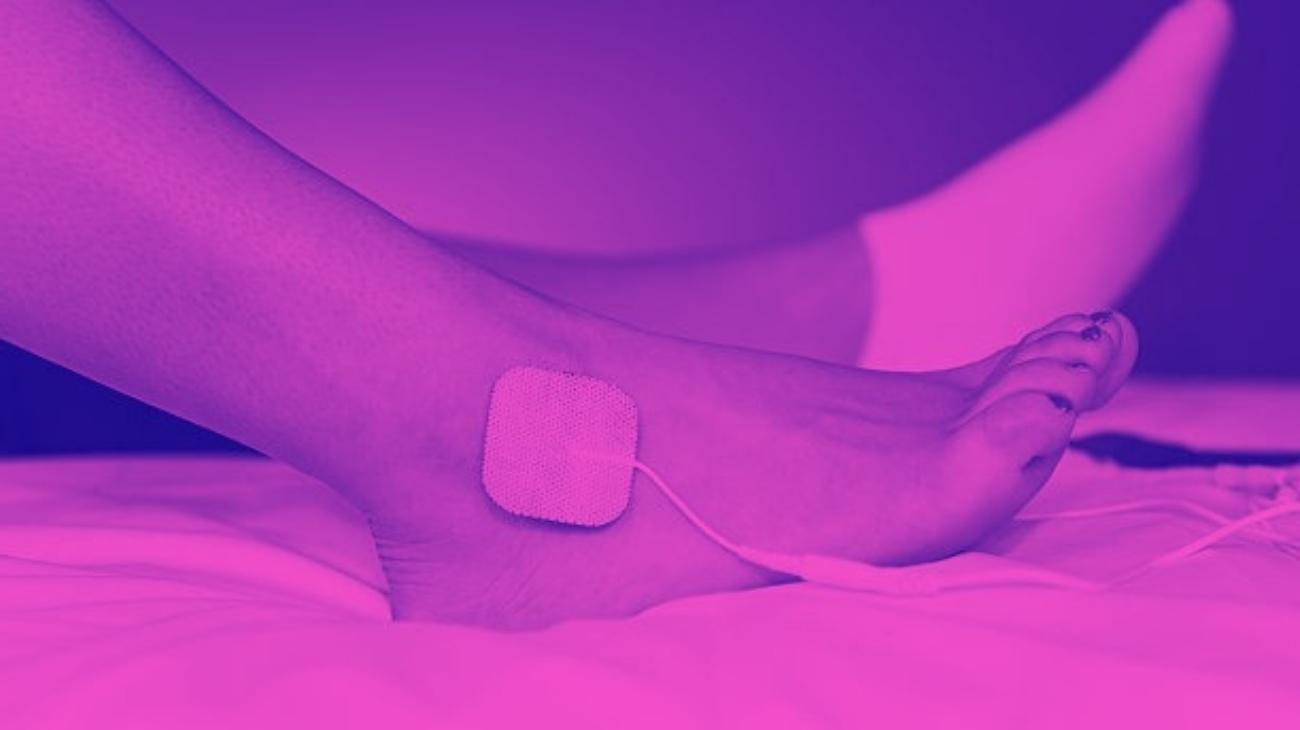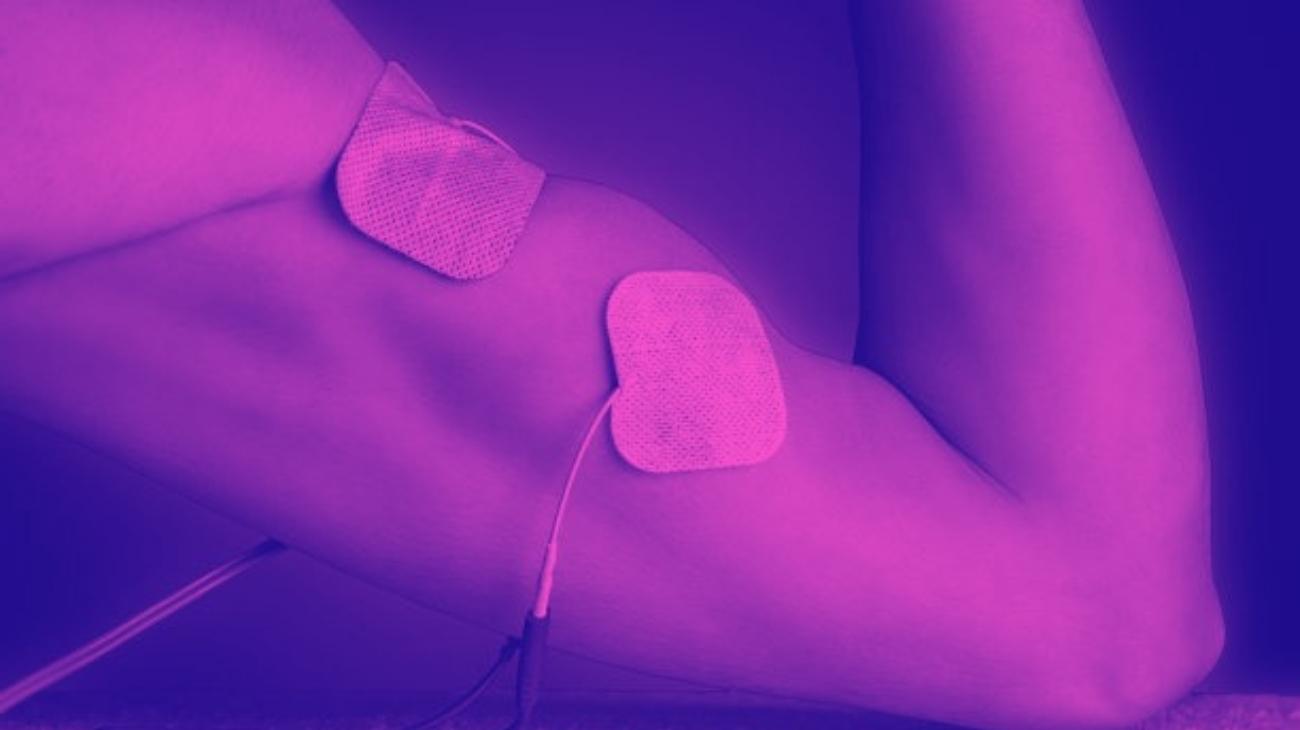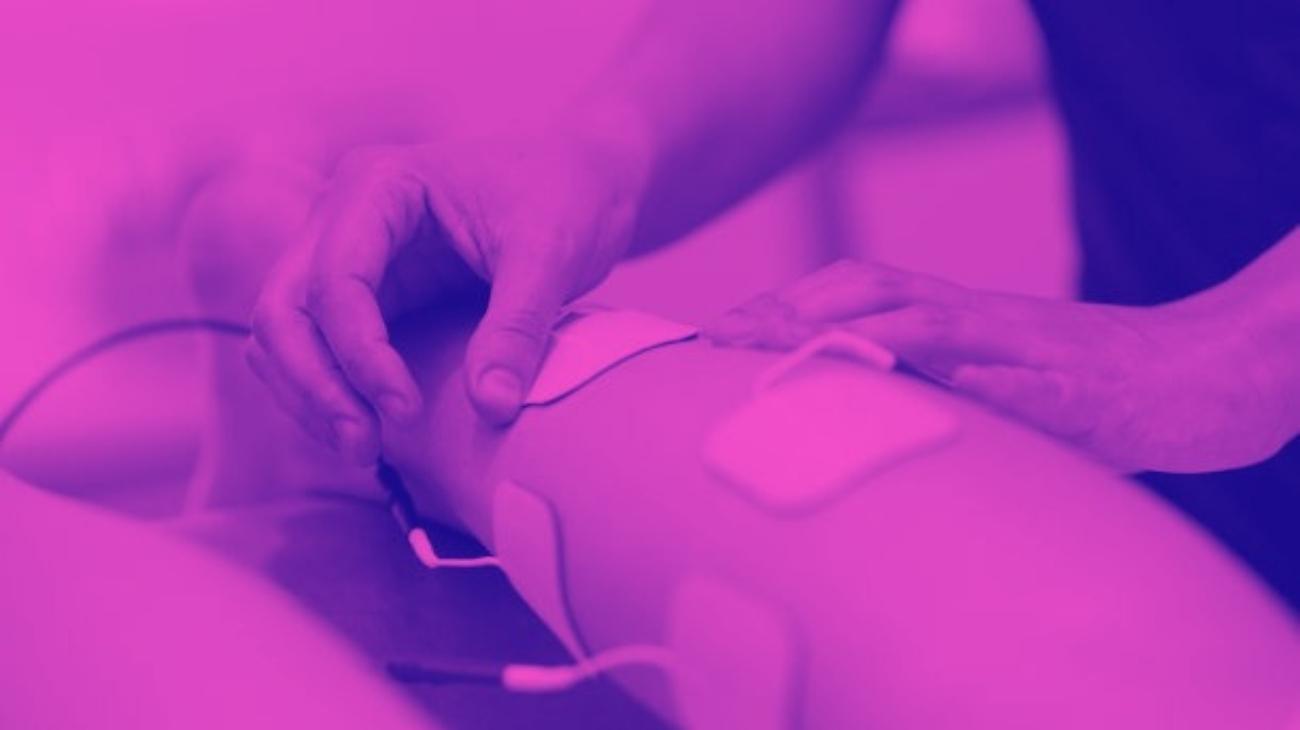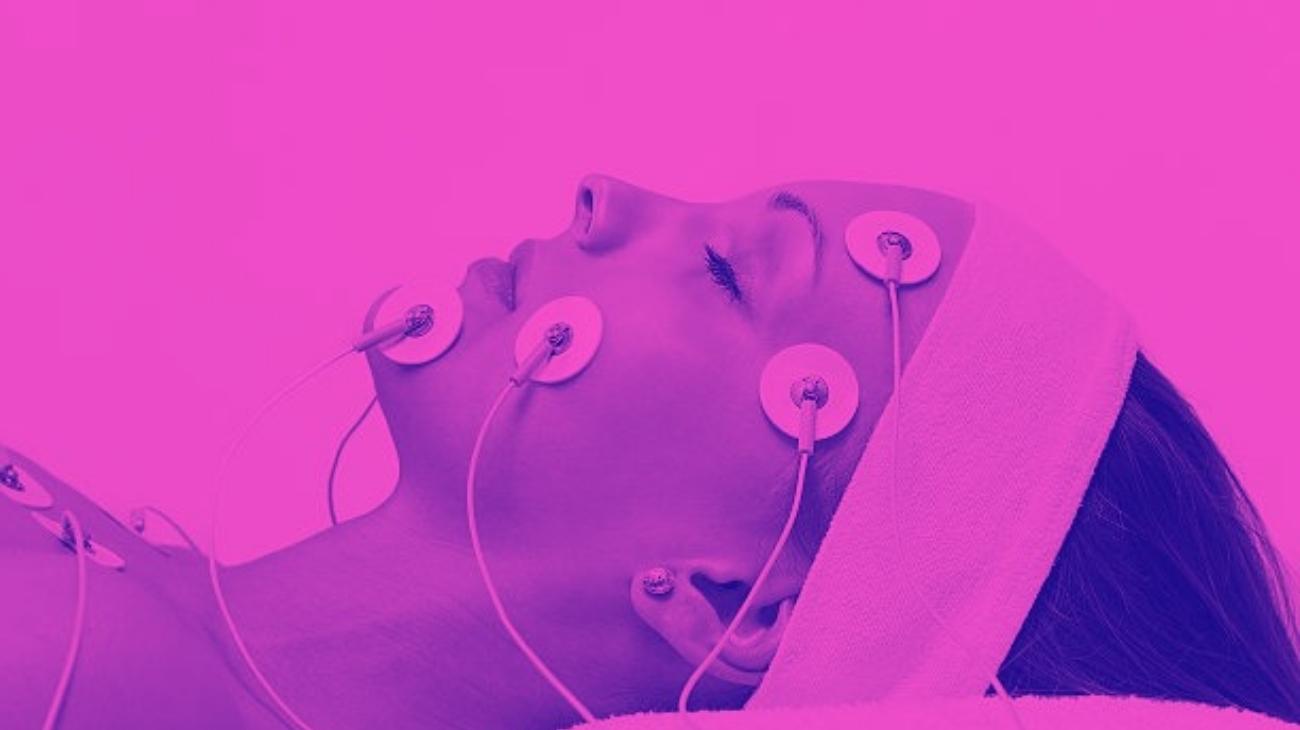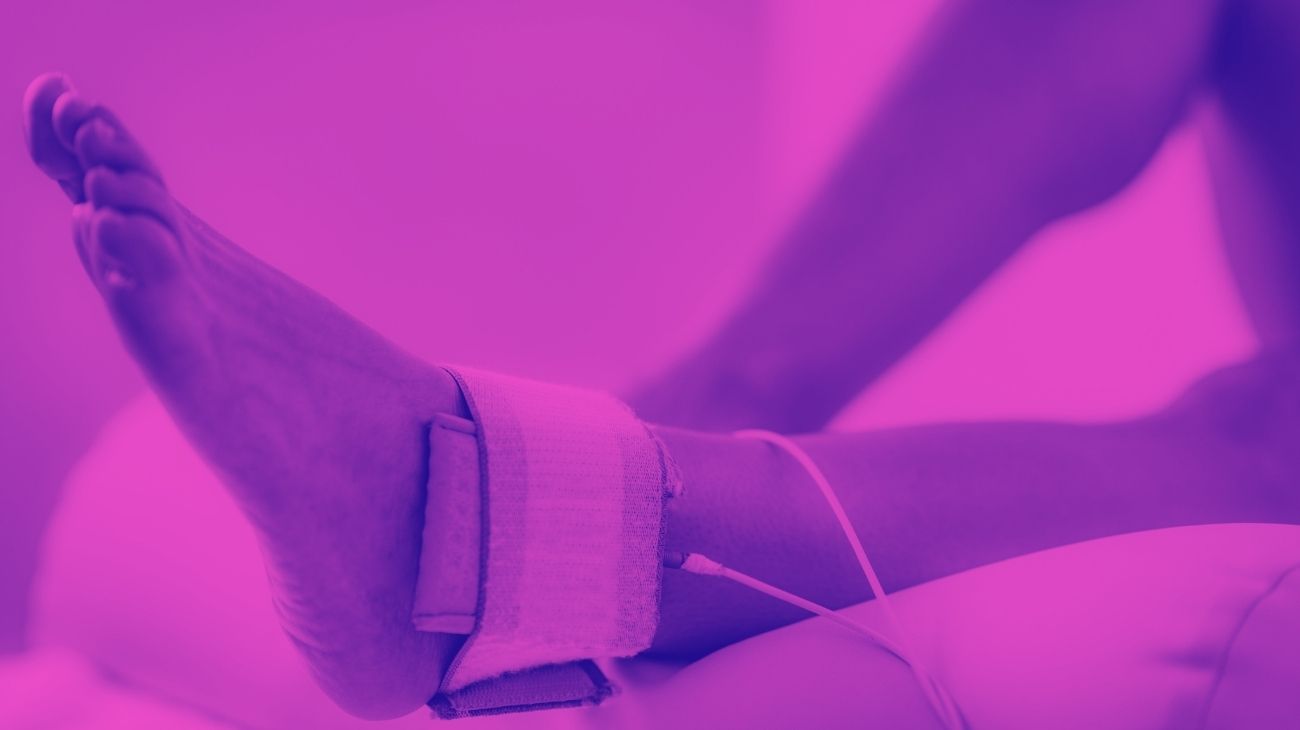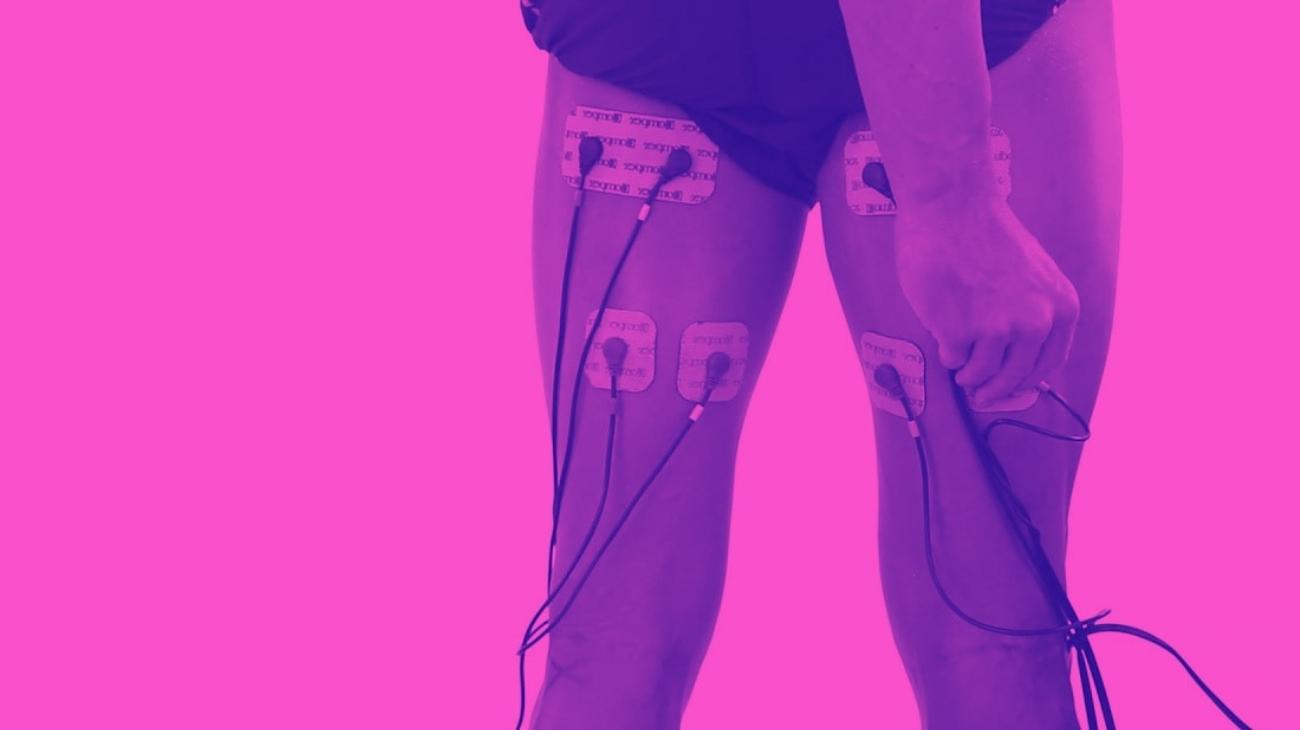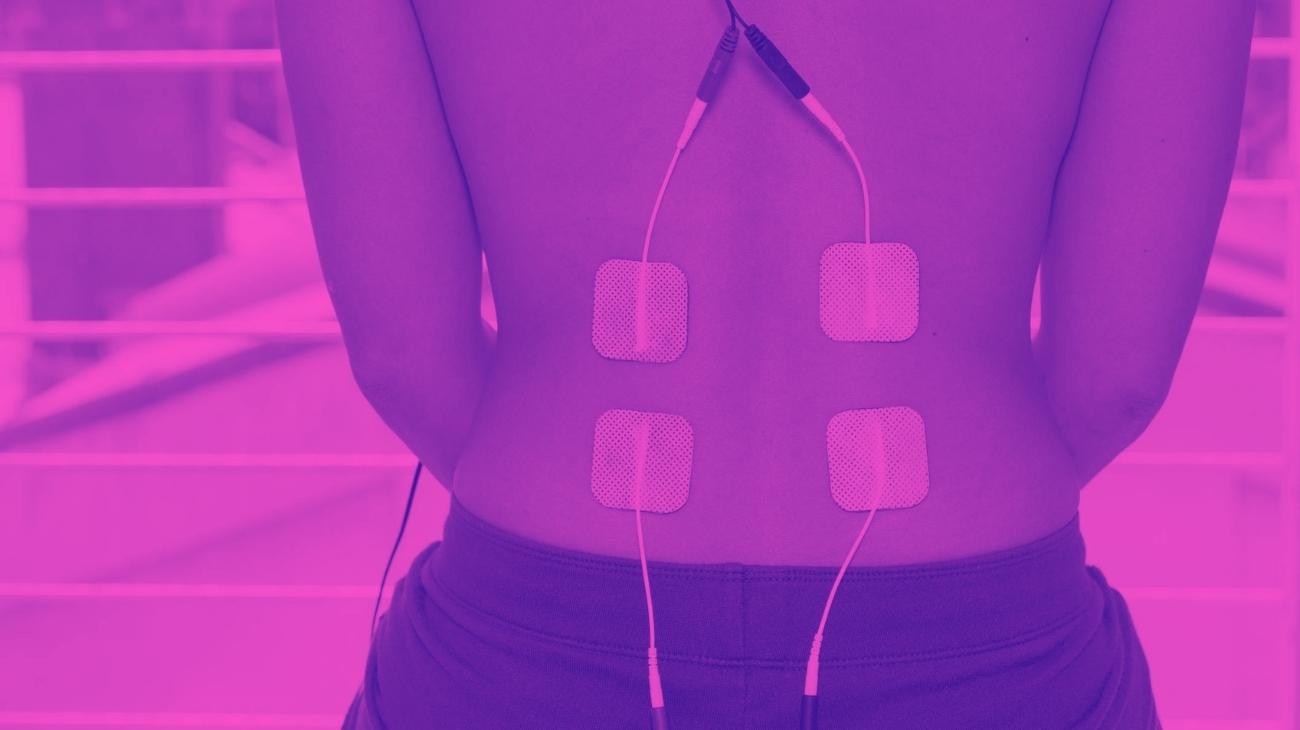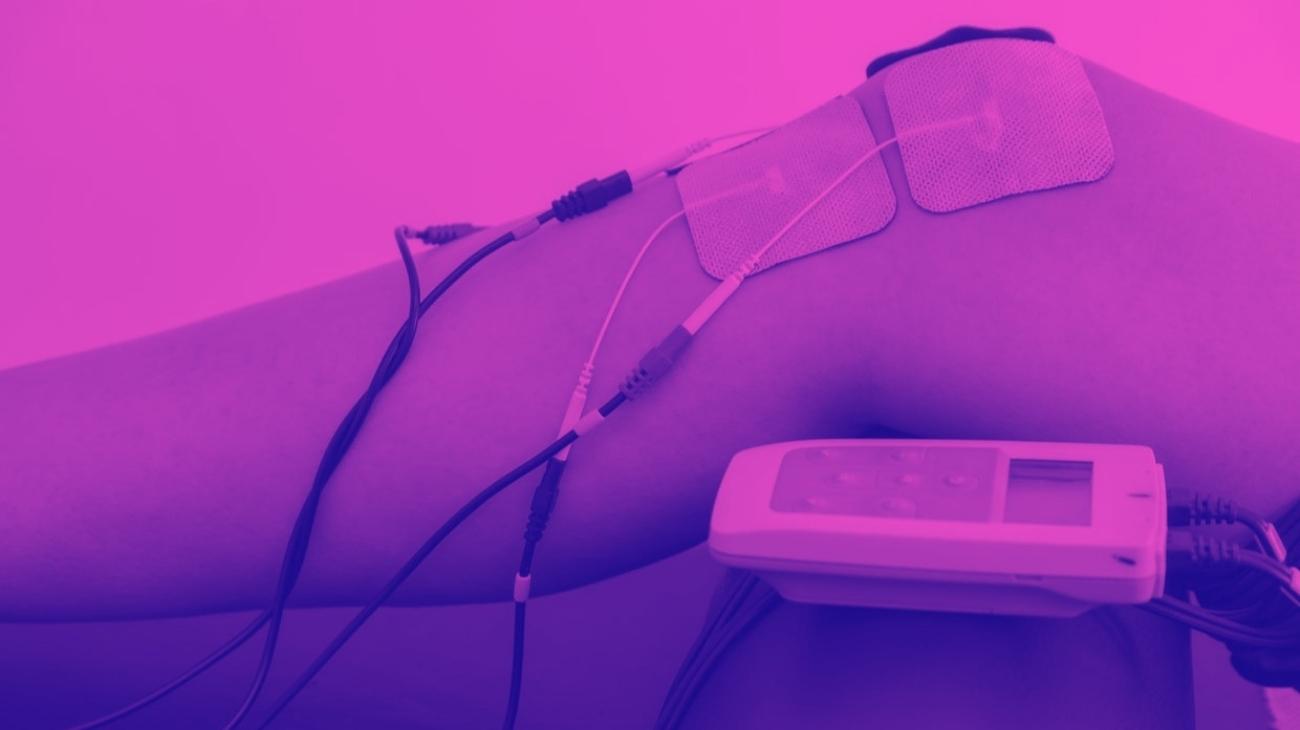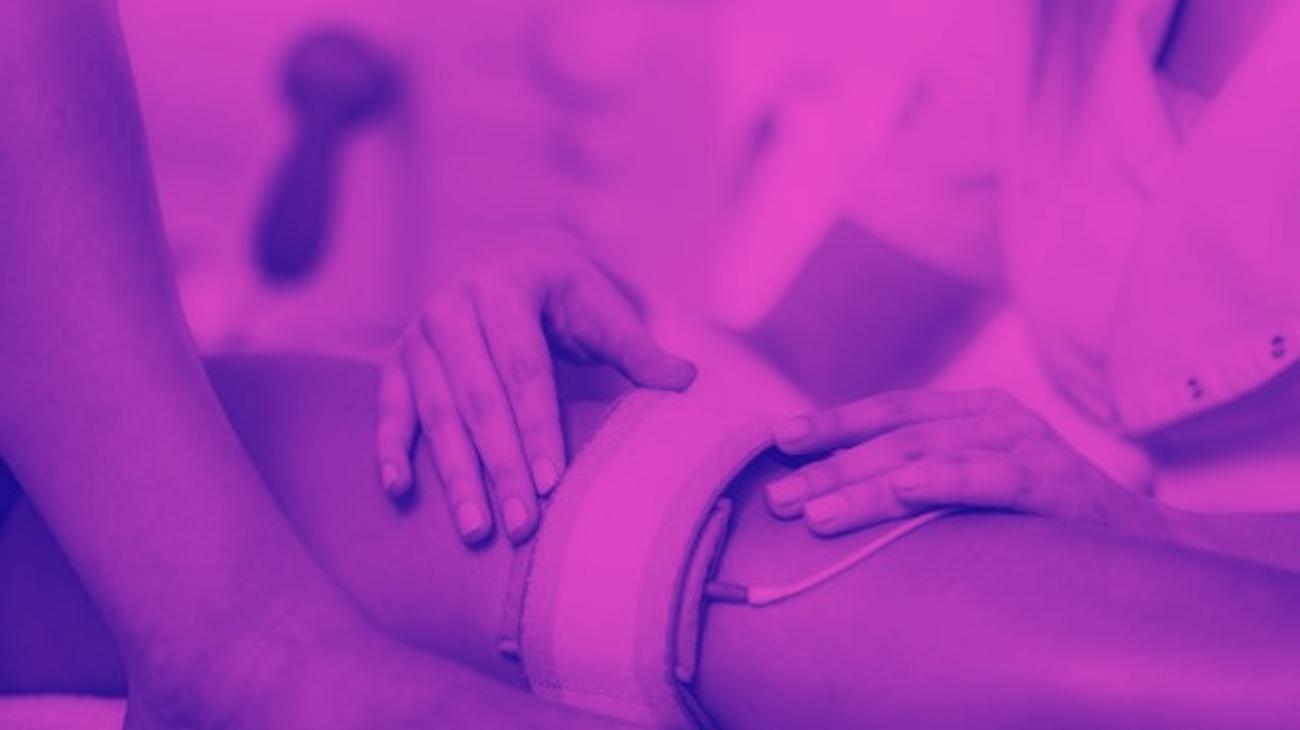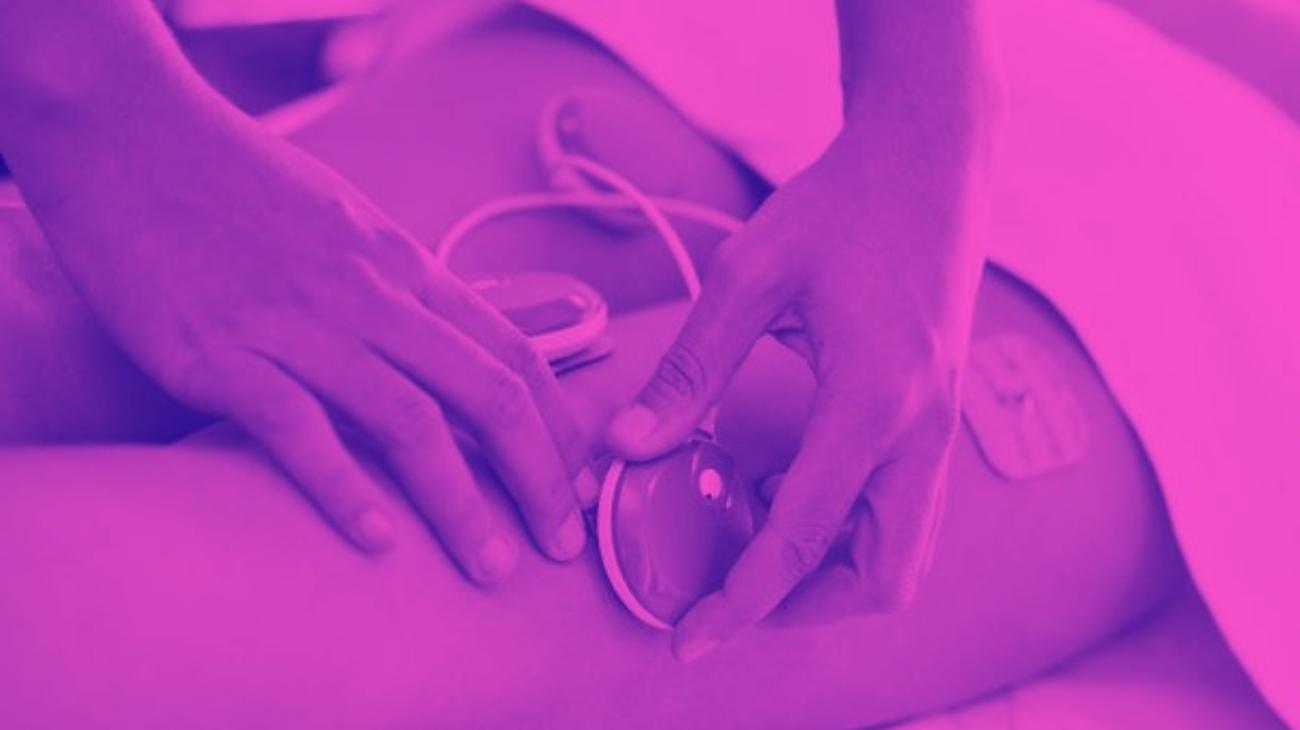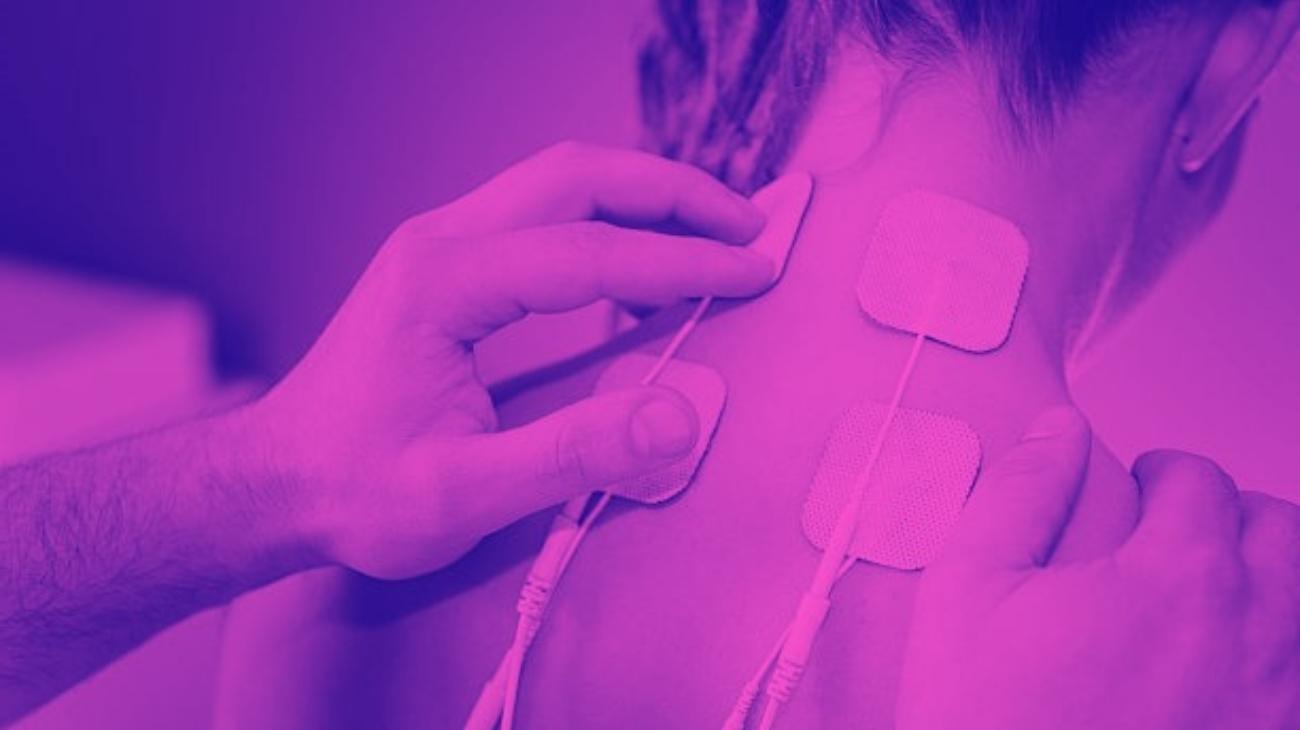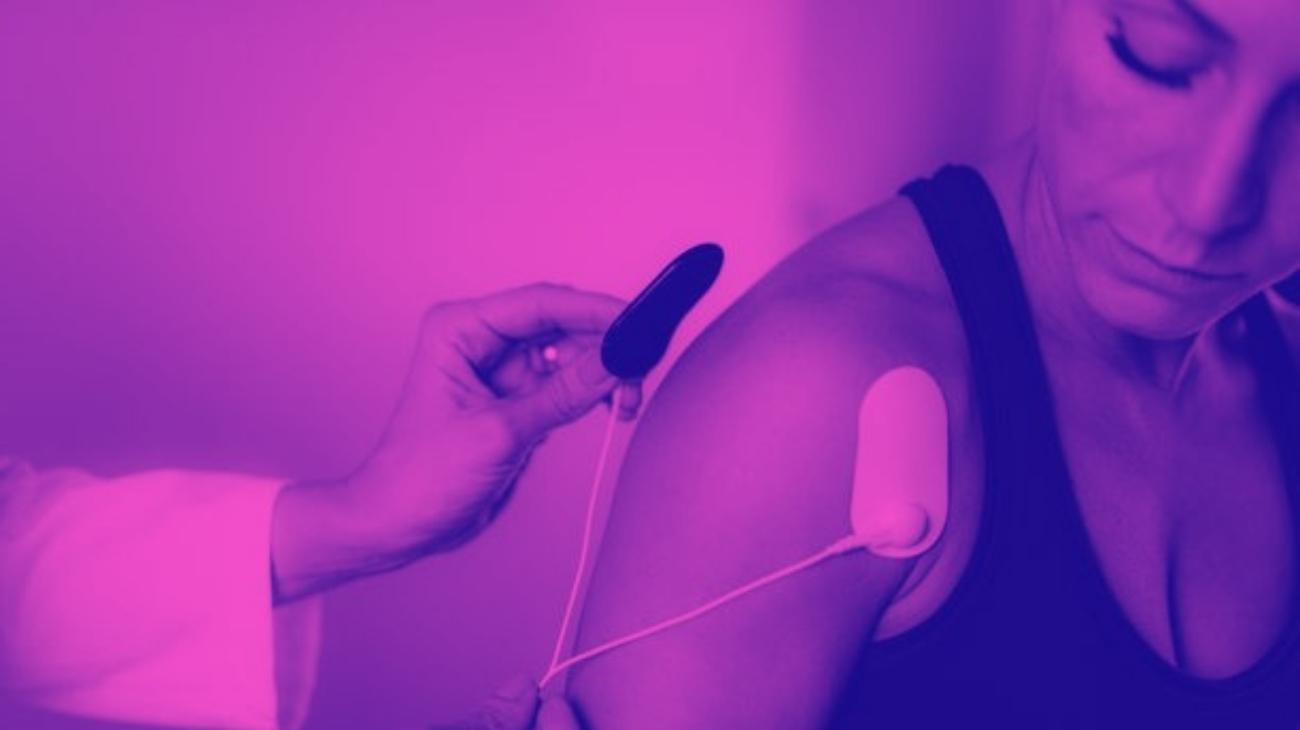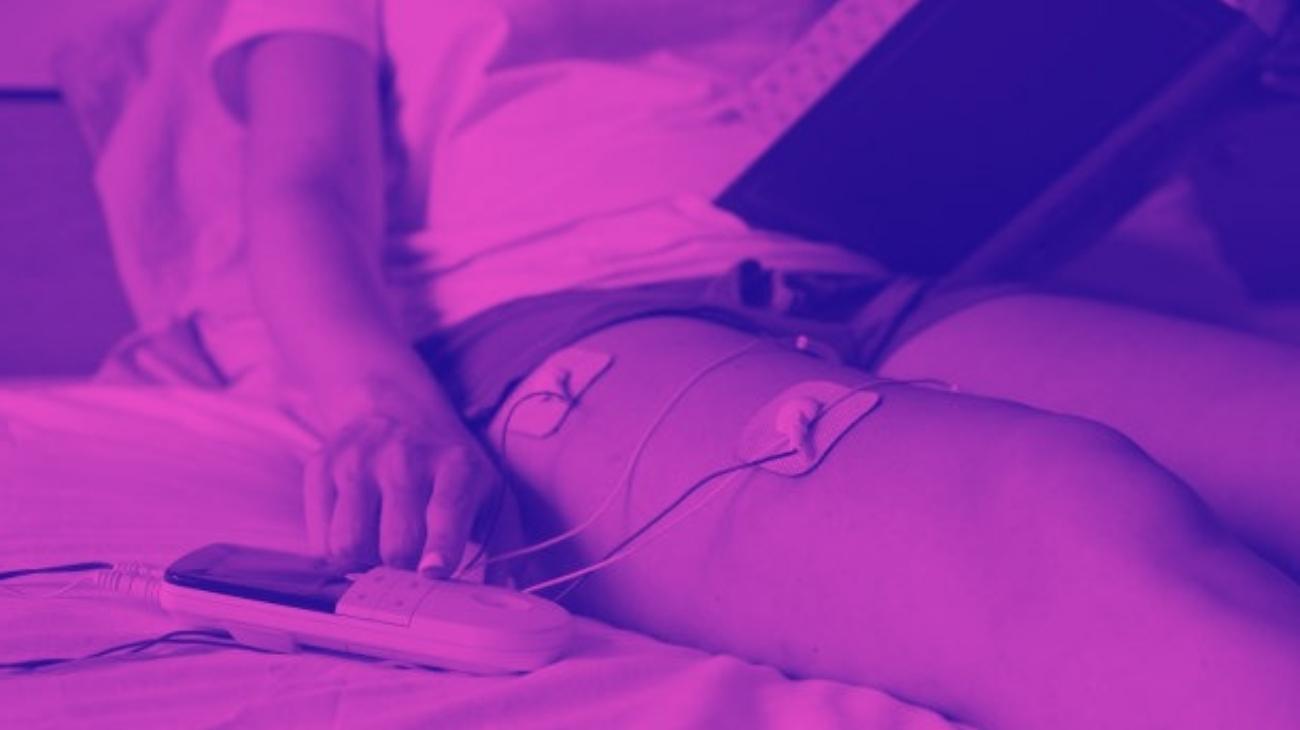- How to use a TENS machine to relieve calf pain?
- Best TENS machines for calf injury recovery
- How to use an EMS muscle electro stimulator for calves?
- Best EMS stimulators for strengthening gastrocnemius muscles
- Video: How to place the electrodes pads on the calves?
- More types of EMS stimulators and TENS machines you should know about
- Most common types of calf injuries
- Differences between TENS and EMS: Which one to use for calf pain?
- Contraindications in the use of electrodes and electrotherapy
The legs make up the largest muscle group of the human body and all the muscles that integrate it are of vital importance for the performance of daily activities. Among these muscles, the soleus and gastrocnemius, commonly known as calf muscles, make up the calf musculature and fulfill a wide variety of functions, both mobility and stability.
For this reason, keeping these muscles in proper condition is of great importance to avoid subsequent injuries in areas such as the knee and ankle. To this end, TENS and EMS electrostimulation therapies can be effectively applied to keep the muscle healthy, relieve pain and prevent injury. Below, we will explain the optimal method for using each of these therapies.
How to use a TENS machine to relieve calf pain?
Injuries occurring in the calf muscles can be very painful, although fortunately they can be treated with the application of transcutaneous electrical nerve stimulation, or TENS.
The main benefits of the application of this therapy are the following:
- Increases the pain threshold: the electrical discharges applied by the TENS unit directly affect the pain receptors located in the tibial nerve and the sural nerve, resulting in an increase in pain resistance that remains active during the session and generating a sensation of relief that lasts for several minutes after the session.
- Suppresses the cells that produce pain: the application of transcutaneous electrical nerve stimulation suppresses the reproduction of the group of cells around the twins responsible for generating the sensation of pain, causing instant relief in the patient that will remain even after the electrodes are removed.
- Increases the production of endorphins: electrostimulation generates a physiological response that results in a discharge of endorphins into the bloodstream, a hormone with analgesic effect produced naturally by the body, which greatly reduces the sensation of pain.
- Promotes blood circulation: the electric shocks on the calf muscles cause dilation of the blood vessels integrated in the muscle, generating a sensation of local analgesia and facilitating recovery.
All these benefits provided by the application of TENS therapy, make it an excellent option for patients dealing with muscle pain produced by injuries such as:
- Tears
- Muscle strain
- Fiber rupture
- Arterial claudication
- Varicose veins
It is necessary to emphasize the fact that, despite its popularity, transcutaneous electrical nerve stimulation is not a method of treatment for diseases and injuries, but to relieve the patient's pain. You can use it to make the recovery treatment more bearable, but the latter should be supervised and controlled by a specialist.
Best TENS machines for calf injury recovery
Now, we present you a list with some examples of the best transcutaneous electrical nerve stimulation or TENS therapy units and devices, which will be very useful to reduce the pain of calf muscle injuries.
- Type: Combo
- Channels: 4
- Modes/Programs: 24 Programs
- Intensity: Not specified
- Wireless: Yes
- Heat Therapy: No
- Battery: Rechargeable Lithium
- Electrodes: 24 Pads
- Display: Digital
- Size: Not specified
- Includes user manual
- TENS+EMS combo
- Includes carrying bag
- Reduces pain symptoms
- Rechargeable battery
- Battery life not specified
- No intensity levels specified
- No heat therapy
It has 4 channels of operation, 5 modes of TENS currents, 3 modes of EMS stimulation; and 24 predefined programs that generate low intensity electrical impulses to stimulate the nerve endings in the treated area, effectively blocking pain signals.
- Type: Combo
- Channels: Dual
- Modes/Programs: 24 Modes
- Intensity: Not specified
- Wireless: Yes
- Heat Therapy: No
- Battery: Rechargeable Lithium (up to 20 hours)
- Electrodes: 8 Pads
- Display: Touch
- Size: Not specified
- Includes user manual
- Long battery life (up to 20 hours)
- Portable and small size
- TENS+EMS Combo
- Reduces pain symptoms
- Does not specify intensity levels
- Does not specify measurements and weight
- Does not include carrying bag
It includes 24 massage programs in total, which are designed to treat a wide variety of ailments. Each of the modes has 4 different options to choose from, and comes with all the accessories you may need, from electrodes and guide wires to a user guide and an electrode positioning guide.
- Type: TENS
- Channels: Dual
- Modes/Programs: 5 Modes
- Intensity: 10 Levels
- Wireless: Yes
- Heat Therapy: No
- Battery: Rechargeable Battery
- Electrodes: 4 Pads
- Display: Digital
- Size: 8.8" x 2" x 7.8" - 1.15 lbs
- Includes user manual
- Prevents muscle atrophy
- Accelerates recovery from sports injuries
- Includes carrying bag
- Reduces pain symptoms
- Non-universal electrode replacements
- Not suitable for muscle hypertrophy
- Few types of programs
The TENS 7000 muscle stimulator includes one of the most complete electrical stimulation therapy packages you will find. It includes 1 TENS 7000 unit, 2 guide cables, 4 packs of reusable pads, 1 9-volt battery, 1 instruction manual and a hard case to carry your electrostimulation equipment wherever you want.
- Type: TENS
- Channels: 4
- Modes: 24 Programs
- Intensity: Not specified
- Wireless: No
- Heat therapy: No
- Battery: Rechargeable
- Electrodes: 8 Pads
- Display: LCD
- Size: Not specified
- 4 independent channels
- Provides cramp relief
- Portable Device
- Promotes tissue healing
- 24 programs
- Few electrodes
- Does not specify battery life
- Does not specify intensity and size
It has 24 clinically proven massage programs, which are divided into 12 TENS therapy programs and 12 muscle stimulation training modes. It has a long-life rechargeable lithium battery that will give you a great autonomy of several hours of continuous use, eliminating the extra cost of buying replacement cylindrical batteries.
- Type: TENS
- Channels: Dual
- Modes/Programs: 8 Modes
- Intensity: 25 Levels
- Wireless: Yes
- Heat Therapy: No
- Battery: 3 AAA Batteries
- Electrodes: 4 Pads
- Display: Digital
- Size: 2.14" x 5.5" x 7.08" - 0.33 lbs
- Includes carrying bag
- Improves joint mobility
- Portable and small size
- Reduces pain symptoms
- Good quality
- Few types of programs
- Not suitable for muscle hypertrophy
- Battery operated
It has an interesting session timer function that allows you to adjust the duration of each therapy up to a maximum of 60 minutes. Its compact size allows it to be carried in your pocket, so you can take it with you from home to work, or on the road, and use it whenever you need it.
How to use an EMS muscle electro stimulator for calves?
Being composed almost entirely of muscles and nerves, the calf area, specifically over the calves, is an ideal area for the use of muscle electrostimulation. This therapy uses electrical currents ranging from 70 Hz to 150 Hz to generate contractions that stimulate the development of muscle fibers.
This leads to faster recovery and improved strength and elasticity of the gastrocnemius and soleus muscles, making it an excellent option for physical rehabilitation therapies.
Among the main benefits of EMS for calf muscles, the following stand out:
- Accelerates muscle recovery: muscle contractions caused by EMS shocks result in increased recovery of muscle fibers in the calf muscles, resulting in faster recovery.
- Reduces the rate of muscle tissue loss: this is a consequence of age, sedentary lifestyle or chronic injury and can increase vulnerability to serious injury. EMS therapy activates the calf muscles to provide exercise.
- Improves blood supply: electrostimulation results in vasodilatation which increases up to 20% the capacity of muscles to receive blood, oxygenating muscle tissue, thus strengthening the gastrocnemius and soleus muscles and generating greater stability for the Achilles tendon.
- Avoids muscle fatigue: being a passive treatment, it generates a reduction in oxygen consumption, which leads to a considerable increase in muscle endurance of the calves and soleus, thanks to which the athlete can perform at maximum capacity for longer.
EMS therapy is focused on rehabilitation through muscle recovery rather than pain relief, making it an excellent choice for regaining muscle tone after injuries such as Achilles tendonitis or plantar fasciitis
Best EMS stimulators for strengthening gastrocnemius muscles
The use of EMS will strictly depend on the type of injury and the level of pain presented by the patient, so in case of injuries it should be used strictly for physiotherapeutic purposes, since muscle contractions can be counterproductive for recovery if the patient presents intense pain.
- Type: Combo
- Channels: 4
- Modes/Programs: 6 Programs
- Intensity: Not specified
- Wireless: No
- Heat Therapy: No
- Battery: Rechargeable
- Electrodes: 12 electrodes
- Display: Digital
- Size: 5.38" x 3.75" x 1"
- Improves blood circulation
- Prevents muscle atrophy
- Rechargeable battery
- Good quality
- Reduces pain symptoms
- Does not specify intensity levels
- No heat therapy
- No weight specified
It also has 5 programs of use focused on different branches of physical conditioning: endurance, resistance, strength, active recovery and warm-up. Proper use of this device will allow you to reach your maximum performance with very little cardiovascular fatigue, and is highly recommended for fitness enthusiasts who frequently engage in competitions.
- Type: Combo
- Channels: -
- Modes/Programs: 15 Programs
- Intensity: Not specified
- Wireless: Yes
- Heat Therapy: No
- Battery: Rechargeable Lithium
- Electrodes: 4 Pads
- Display: No display
- Size: Not specified
- TENS+EMS Combo
- Control from mobile app
- Reduces pain symptoms
- Includes user manual
- Rechargeable battery
- Does not specify dimensions and weight
- Battery life not specified
- Does not specify intensity levels
With more than 400 modes of use and a variety of intensity levels, the PowerDot 2.0 is one of the most complete electro stimulators available, as its functions focus on muscle recovery, improved physical performance, and pain relief. All these features make it the leading choice for the immediate treatment of any pain, whether caused by injury or illness.
- Type: Combo
- Channels: 4
- Modes: 20 Programs
- Intensity: 40 Levels
- Wireless: No
- Heat therapy: No
- Battery: Rechargeable
- Electrodes: 12 Pads
- Display: Digital
- Size: Not specified
- Features 20 modes
- Includes 40 intensity levels
- Portable device
- 12 pads with different sizes
- Rechargeable battery
- Somewhat slow charging
- No size specified
It has 20 modes of use and 40 adjustable intensity levels, as well as a time controller that allows you to adjust the therapy sessions according to your needs. Its compact size makes it incredibly discreet, so you can take it to the office, on a trip, on the street or wherever you like.
- Type: Combo
- Channels: Dual
- Modes/Programs: 24 Modes
- Intensity: 20 Levels
- Wireless: Yes
- Heat Therapy: No
- Battery: Lithium Rechargeable (up to 24 hours)
- Electrodes: 8 Pads
- Display: Digital
- Size: Not specified
- TENS+EMS Combo
- Long battery life (up to 24 hours)
- Portable and small size
- Improves joint mobility
- Improves blood circulation
- Does not specify measurements and weight
- Does not include touch screen
- Some electrodes dry quickly
It has 20 intensity levels and a dual current output function, which will allow you to program different modes of use in each of its electrodes allowing you to treat different areas of the body simultaneously. Its electrodes are reusable and hypoallergenic, and it has a timer that can be adjusted between 10 and 60 minutes.
- Type: Combo
- Channels: Normally 2 (Dual)
- Modes/Programs: 6 Programs
- Intensity: Not specified
- Wireless: Yes
- Heat Therapy: No
- Battery: Rechargeable (7 hours of use)
- Electrodes: 2 Pods and 6 electrodes
- Display: Smartphone
- Size: Not specified
- Reduces pain symptoms
- Portable and small size
- TENS+EMS Combo
- Wireless electrodes
- Rechargeable battery
- Size and weight not specified
- No intensity levels specified
- No heat therapy
It has a rechargeable battery that can provide an autonomy of up to 7 hours per charge, 6 unique training programs focused on different branches of fitness to help you achieve your goals, and compatibility with your mobile for easy use. It is recommended for those physically active people looking for a compact, portable and natural way to deal with workout-related ailments.
Video: How to place the electrodes pads on the calves?
Electrodes for calf
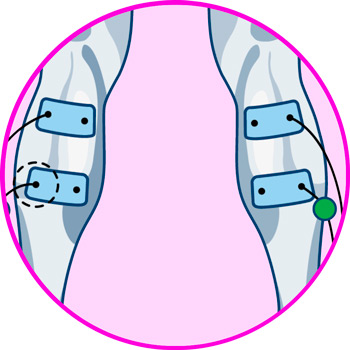
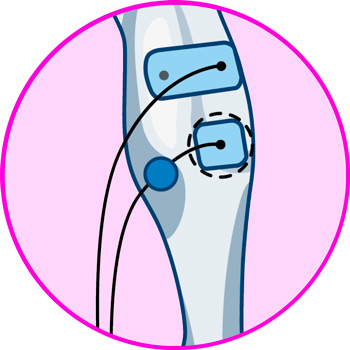

- Placement of TENS electrodes: The gastrocnemius muscle is composed of two sides, which are called the external and internal calf. When positioning the pads, you should make sure that the area of pain is in between them, so if the pain is in the inner calf, you should place one electrode on the medial head of the gastrocnemius muscle, the section closest to the popliteal fossa, while the second electrode on the lower part of the inner calf muscle, just on the border with the soleus muscle.
- Placement of electrodes for EMS: Since the goal of muscle electrostimulation therapy is to work on muscle strength and recovery, it is necessary to specify that the location of the electrodes for optimal training will depend on the muscle you want to strengthen. To focus on the calves, it is necessary to place the first electrode on the medial head of the gastrocnemius and the second electrode on the lateral head of the gastrocnemius.
More types of EMS stimulators and TENS machines you should know about
Most common types of calf injuries
Due to the oval and elongated shape of the calves, and their attachment to the femur and ankle, they are among the muscles most prone to elongations and injuries resulting from this.
Among the most common we can highlight:
- Overloads: overload injury is one of the most common injuries. It is the exhaustion of the muscle accompanied by pain and the sensation of upward displacement of the muscle. It is a very common injury among athletes, caused by excessive muscle tension or insufficient rest.
- Tears: is the generic term used to describe fibrillar tears of the calf muscles, which is described by patients as a sharp pain similar to a pinch. It can occur when a sudden movement is made that causes excessive stretch in the muscle, such as jumping or making sudden changes in direction when moving.
- Cramps: this is a neuromuscular alteration that causes an intense contraction of the muscle that can last for prolonged periods, in which the muscle relaxation disappears. They are caused by muscle overload and lack of hydration or minerals such as potassium and calcium.
- Contractures: they are produced by overexertion exerted on the muscle, causing an involuntary contraction that produces hardening. It is very common in novice athletes who do not take rest periods for muscle recovery.
- Achilles tendinitis: it consists of the irritation of the Achilles tendon, which is the one that joins the calf with the calcaneus or heel. It is very common in runners, soccer players or practitioners of mountain sports such as TRX or hiking, as it occurs due to excessive use of this tendon, which is used in all movements of the heel joint, although its appearance is more related to the loss of elasticity of the tissues due to age or poor hydration.
Differences between TENS and EMS: Which one to use for calf pain?
Transcutaneous Electrical Nerve Stimulation (TENS) is a therapy that uses currents ranging between 1 and 250 Hz, to intervene in the neurological signals of the tibial and sural nerves, which go from the lower back to the feet, responsible for generating pain, so that the patient can increase their tolerance to it.
EMS or muscular electrostimulation is different, and uses currents that act directly on the soleus and gastrocnemius muscles in such a way that a muscular contraction can be achieved in them. Thanks to this, a gradual strengthening of these muscles can be achieved, making it useful for recovering muscle tone after long-term injuries.
With this in mind, both TENS and EMS therapy have merit when it comes to treating calf injuries, since being an area composed mostly of muscle, it gives EMS electrostimulation ground to work on post-injury recovery and tissue rehabilitation, while TENS allows intercepting the pain receptors on the muscles to alleviate the ailments caused by these injuries.
Both modes of electrostimulation are favorably indicated for the treatment of calf muscle injuries, although it will depend on the objective of each treatment. If you are faced with a muscle injury that causes severe pain, the best option is transcutaneous electrical nerve stimulation, since it is aimed at reducing pain. While muscle electrostimulation therapy is indicated for muscle rehabilitation and strengthening after injuries.











